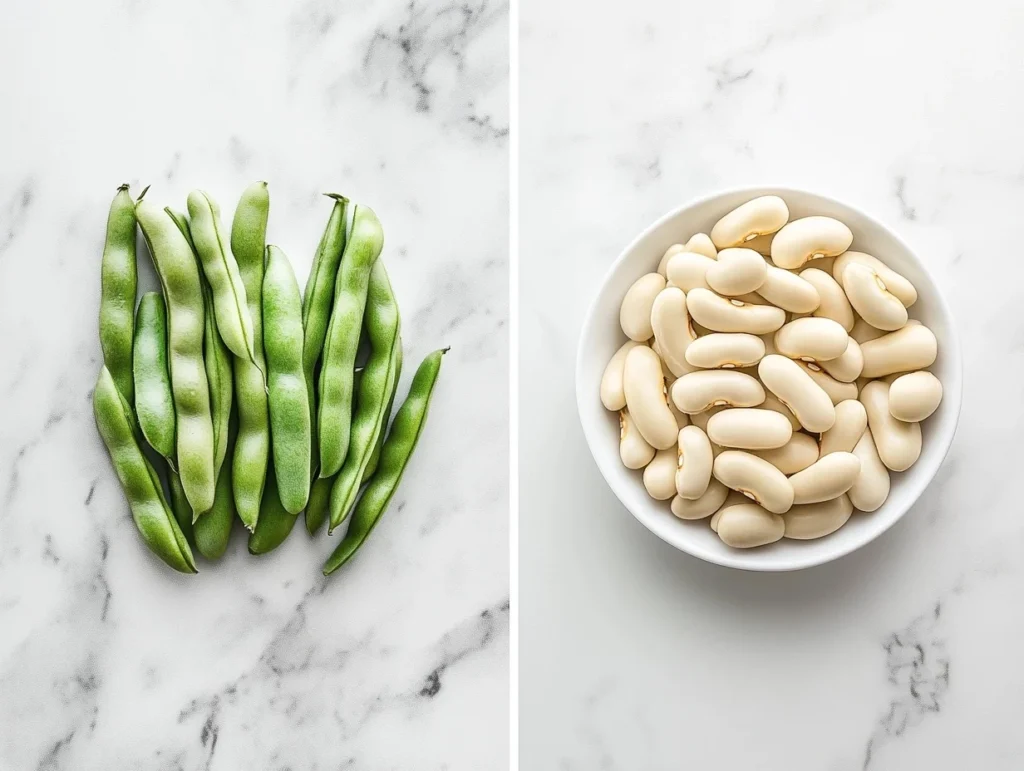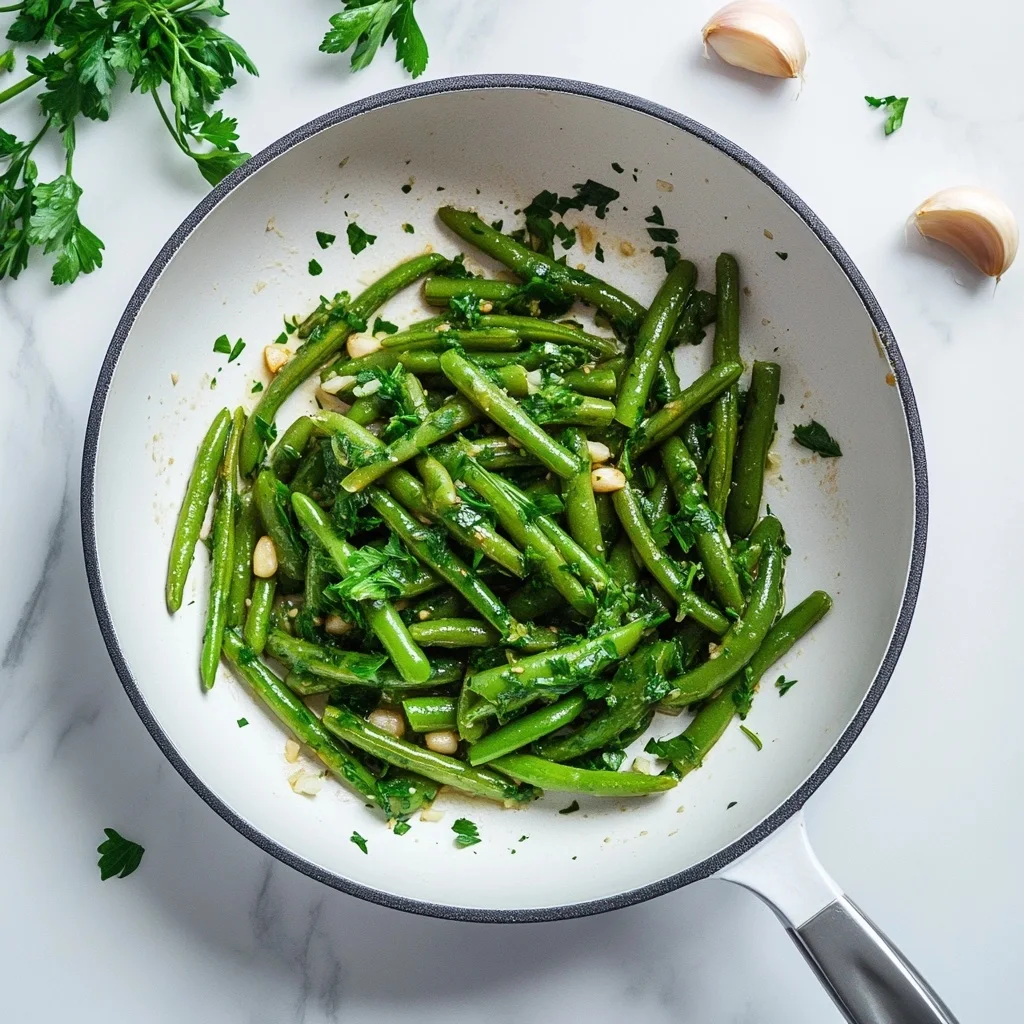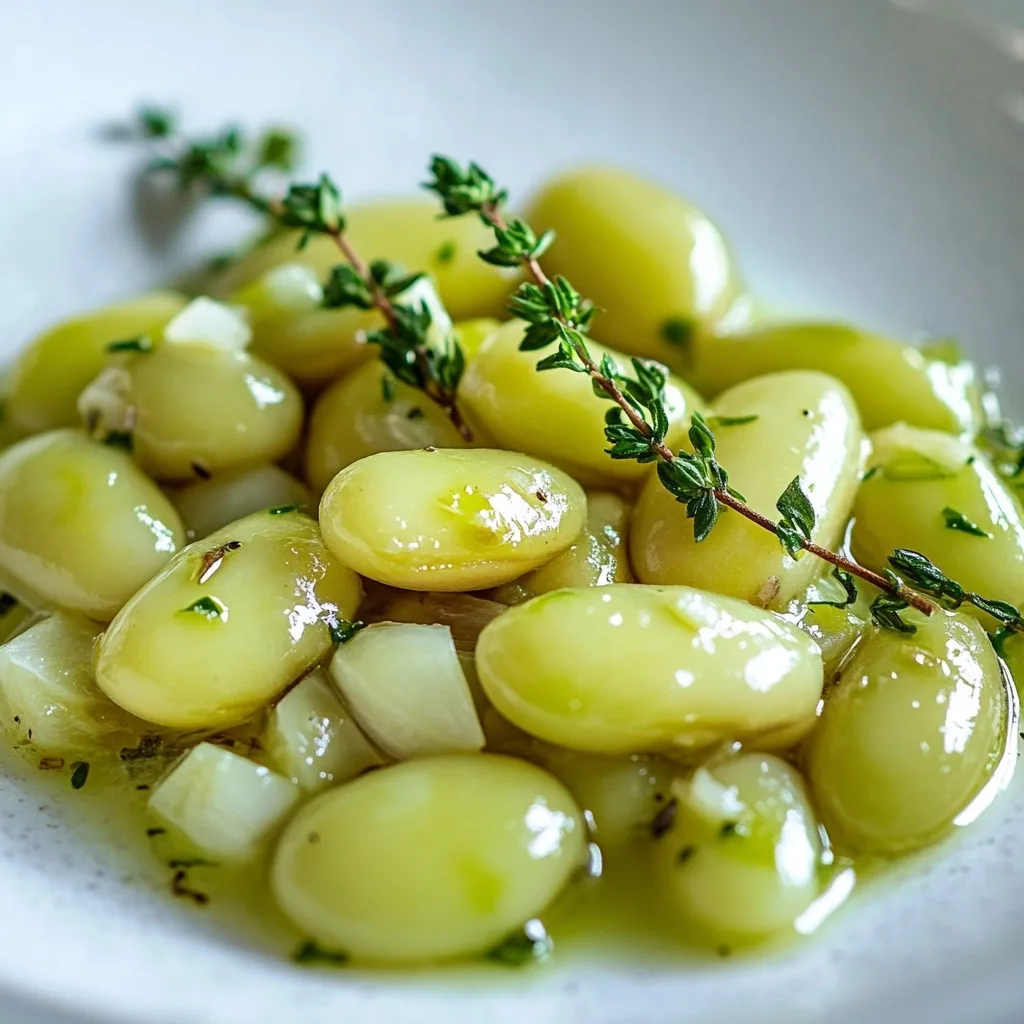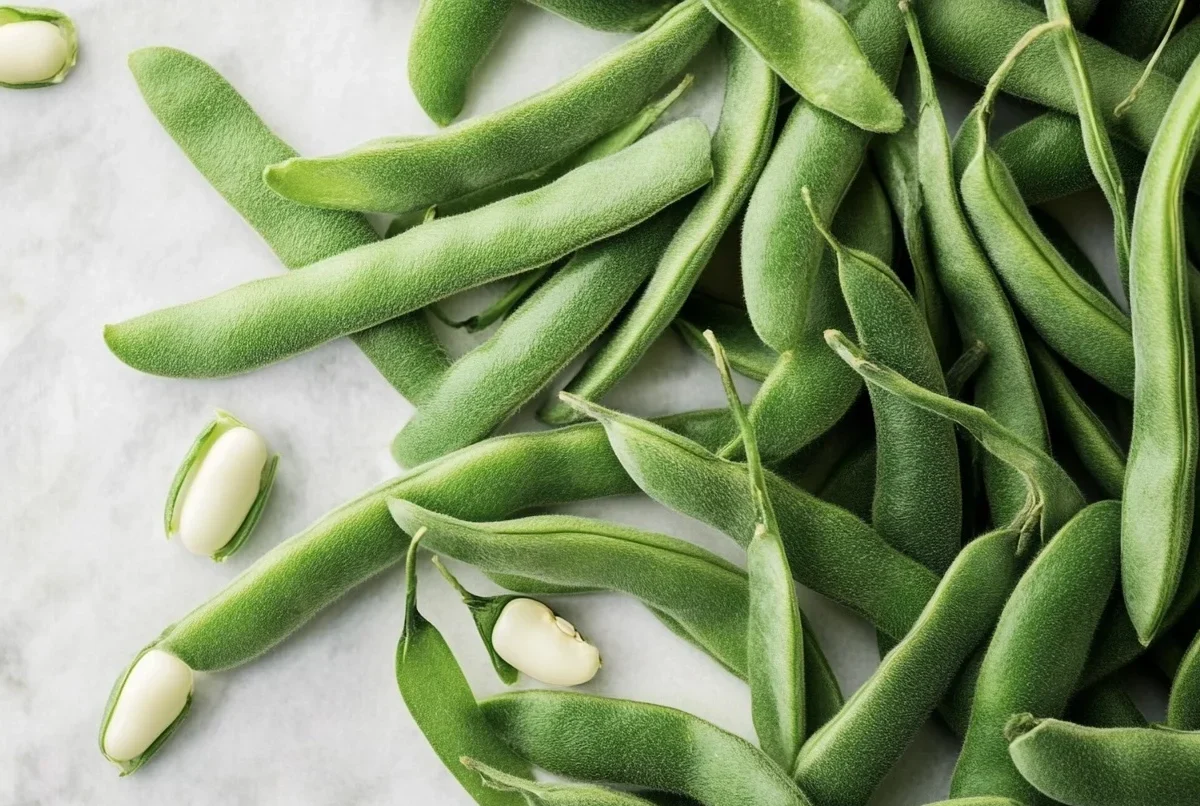What Do Romano Beans Taste Like often mistaken for other types of beans, offer a distinctive flavor and texture that sets them apart in the culinary world. Whether you’re a home cook or a seasoned chef, understanding the unique taste of Romano beans can elevate your next dish. In this article, we will explore the flavor profile of Romano beans, how they compare to other beans, and how they can be used in various recipes.For a broader variety of recipes, be sure to check out our Delicious Salmon and Rice Recipes You Need to Try.
Let’s dive into the world of Romano beans and uncover everything you need to know about this delicious legume.
Table of Contents
Understanding Romano Beans
What Are Romano Beans?
Romano beans, sometimes called Italian flat beans, are a type of bean native to Italy. They are part of the broad bean family and are known for their flat, wide pods and tender texture. Romano beans come in both fresh and dried varieties, with fresh beans being commonly used in Mediterranean dishes.
The fresh Romano beans are typically picked while they are still tender, and they have a mild yet earthy flavor that sets them apart from other beans like kidney or pinto beans.
The Texture and Appearance of Romano Beans
Romano beans have a distinct appearance, with their long, flat pods and pale green to yellowish color. The beans inside are usually white or pale green, and they have a smooth, tender texture when cooked.
Unlike kidney beans, which can have a tougher texture, Romano beans are soft and delicate. This makes them ideal for dishes that require a bean that can absorb the flavors of seasonings and liquids while maintaining a satisfying bite.
Flavor Profile of Romano Beans
What Do Romano Beans Taste Like?
Romano beans offer an earthy, slightly sweet flavor with a nutty undertone. Their taste is subtle yet rich, making them a perfect addition to a wide variety of dishes. When cooked, they tend to soak up seasonings like garlic, herbs, and olive oil, enhancing the overall flavor profile of the dish.
The texture of Romano beans contributes significantly to their flavor. They have a smooth, velvety bite, which gives them a satisfying mouthfeel when eaten. This makes them ideal for hearty soups, stews, or as a side dish with grilled meats.
How Do Romano Beans Compare to Other Beans?
Compared to other beans like kidney beans or navy beans, Romano beans are softer and more delicate in texture. Their flavor is also milder, with a slight sweetness and a hint of nuttiness. The difference in texture is particularly noticeable when cooking, as Romano beans cook up tender and retain their shape better than other beans that can turn mushy.
In terms of flavor, Romano beans are closer to green beans but with a richer, earthier taste. While green beans are more crisp and vegetal, Romano beans have a more mellow, savory flavor that complements a variety of dishes.
If you’re looking for more recipe ideas, check out our guide on Bean Soup Recipes to explore other ways beans can be incorporated into your meals.
Fresh Romano Beans vs. Canned Romano Beans
What Do Canned Romano Beans Taste Like?

Canned Romano beans have a slightly different texture and flavor compared to fresh beans. The canning process can make the beans softer and milder, with a more neutral taste. This is especially true if the beans are packed in a brine solution, which can sometimes lend a slightly metallic or “tinny” flavor to the beans.
However, canned Romano beans are still quite versatile. They can be used in dishes where fresh beans would typically be used, but their flavor might not be as robust as fresh beans.
Fresh vs. Canned: Which Tastes Better?
Fresh Romano beans are generally considered to have a better flavor and texture than canned beans. The fresh beans maintain their natural earthy sweetness and nutty flavor, while canned beans can sometimes taste bland. However, if you’re in a pinch or need a quick meal, canned Romano beans are an excellent substitute.
To enhance the flavor of canned beans, it’s a good idea to sauté them with garlic, olive oil, and a few herbs or spices to bring out their natural flavors.
If you’re looking for more ideas to use beans in your cooking, discover great ideas like Pizza Beans
Nutritional Benefits of Romano Beans
What Are Romano Beans Good For?
Romano beans are an excellent source of plant-based protein and dietary fiber, making them a fantastic option for vegetarians and vegans. They are also rich in vitamins and minerals, including vitamin A, vitamin C, and iron. The fiber content in Romano beans aids digestion, while the protein helps in muscle repair and growth.
These beans are also low in fat, making them a heart-healthy addition to any diet. Additionally, they are a good source of antioxidants, which help to reduce inflammation and protect the body from oxidative stress.
How Can Romano Beans Improve Your Diet?
Incorporating Romano beans into your diet can have numerous health benefits. Their high fiber content promotes digestive health, while their antioxidant properties support overall wellness. Whether you enjoy them as a main dish or a side, Romano beans are a nutritious choice for anyone looking to add more plant-based protein to their meals.
Cooking with Romano Beans
Common Ways to Cook Romano Beans

Romano beans can be cooked in several ways, depending on the dish you are preparing. The most common methods include:
- Boiling: Fresh Romano beans can be boiled in salted water for about 5-7 minutes until tender.
- Sautéing: For a quick and easy side dish, sauté Romano beans with garlic, onions, and olive oil.
- Steaming: Steamed Romano beans retain more of their nutrients and flavor, making this method ideal for maintaining their natural taste.
Popular Romano Bean Recipes
Some classic Romano bean recipes include:
- Romano Bean Salad: Tossed with fresh herbs, olive oil, lemon juice, and feta cheese.
- Romano Bean Soup: A hearty soup with tomatoes, garlic, and a splash of white wine.
- Sautéed Romano Beans: Quick-fried with garlic, onion, and herbs.
These recipes showcase the versatility of Romano beans, allowing you to experiment with different flavors and cooking techniques.
How to Store Romano Beans
Proper Storage Techniques for Fresh Romano Beans

To store fresh Romano beans, place them in a perforated plastic bag and keep them in the vegetable drawer of your fridge. They will stay fresh for about 3-5 days. For longer storage, consider freezing them by blanching the beans first and then sealing them in an airtight bag.
Storing Canned Romano Beans
Canned Romano beans can be stored in your pantry for up to a year. Once opened, transfer any leftover beans to a sealed container in the refrigerator, where they will stay fresh for 3-4 days.
The Best Substitutes for Romano Beans
What Are Romano Beans Similar To?
Romano beans are similar to other flat beans like Italian flat beans, as well as green beans. Their texture is also similar to kidney beans but with a softer, more tender bite.
Can You Replace Romano Beans with Other Beans in Recipes?
Yes, you can substitute Romano beans with other beans in most recipes, though the flavor and texture might differ. Kidney beans or pinto beans work well in recipes where a firmer texture is needed, while green beans are a good alternative for a milder, crunchier texture.
FAQs About Romano Beans
What Flavor Are Romano Beans?
Romano beans have a mild, earthy flavor with subtle nutty undertones. Their taste is not overpowering, making them an excellent addition to a variety of dishes. The beans absorb flavors well when cooked, so they pair perfectly with herbs, garlic, and olive oil. Romano beans are often described as slightly sweet and savory, making them versatile for both vegetarian and meat-based meals.
What Are Romano Beans Similar To?
Romano beans are often compared to other types of flat beans, such as Italian flat beans. They share a similar texture and flavor profile to green beans but are a bit heartier with a richer, nuttier taste. In terms of texture, they are more delicate and tender than kidney beans or black beans, making them ideal for lighter dishes or salads.
What Are Roman Beans Good For?
Romano beans are great for a variety of dishes. They can be used in soups, stews, salads, or simply sautéed as a side dish. Thanks to their tender texture, they absorb the flavors of the seasonings they’re cooked with, which enhances their flavor. They are also a healthy addition to a balanced diet, being high in protein, fiber, and essential vitamins like iron, vitamin A, and vitamin C.
What Do Canned Romano Beans Taste Like?
Canned Romano beans have a softer texture and more neutral flavor compared to their fresh counterparts. The canning process can sometimes affect their taste, making them milder and less sweet. However, canned Romano beans are still a great option for quick meals. To enhance their flavor, sauté them with garlic, olive oil, and spices, or use them in soups and stews where their mild flavor can blend well with other ingredients.
Can Romano Beans Be Eaten Raw?
While Romano beans can be eaten raw in some recipes, it’s important to note that raw beans—like all beans—contain lectins, which can be toxic if consumed in large quantities. To ensure they are safe to eat and fully digestible, Romano beans should be cooked thoroughly before being enjoyed. Cooking removes harmful lectins and enhances the beans’ natural flavor and texture.
Conclusion
Romano beans bring a unique flavor profile that can elevate a wide variety of dishes. Whether fresh or canned, they offer a hearty, nutty flavor that pairs beautifully with meats, vegetables, and grains. Now that you know everything about Romano beans—what they taste like, how to cook with them, and where they fit in your diet—it’s time to start experimenting with this versatile legume in your next culinary adventure.
For another heart-healthy dish, try adding beans to a Chicken Pot Pie Recipe for a comforting meal.


